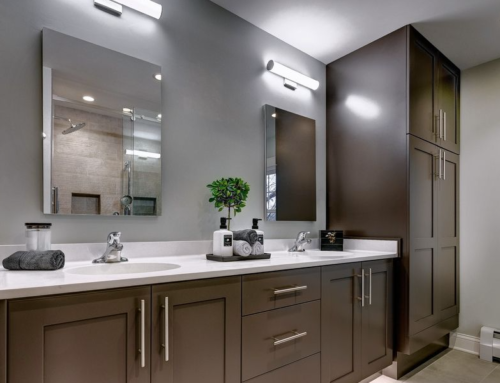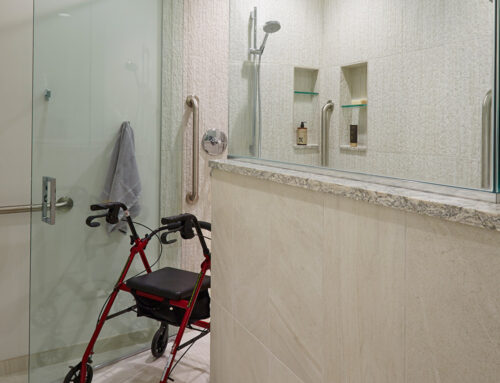It’s a common misconception that safety features can’t be luxurious. Yet if you think that walk-in showers and counter-height shelves are things only “old people” need, you can miss out on many of today’s most safe, functional and aesthetically-pleasing bathroom and kitchen innovations.
As more of us embrace “aging-in-place,” the architectural principles of Universal Design — championed by architects Ed Steinfeld and the late Ron Mace who jointly published the initial standards in 1980 — are more vital than ever. The end goal of Universal Design is to create spaces that are comfortable, attractive and less hazardous for everyone, regardless of age, size and ability.
That’s why I try to adhere to Universal Design principles when designing bathrooms and kitchens — because it’s not simply adapting for disabilities, it’s assuring that the room will serve you well for many years even if your needs change. There are seven key objectives that I follow:
1. Flexibility In Use
Good design should cater to everyone in the household, unless the assignment is to meet one individual’s specific needs. This means accommodating users whether they are standing or sitting, and whether they are right-handed or left-handed.
2. Ease Of Use
Even gym instructors, dancers and other highly-limber individuals appreciate features that save time and effort. I like to include functional touches such as eye-level lighting adjacent to bathroom vanities to supplement overhead lighting, or pullout shelves in kitchens versus fixed shelves.
3. Minimize Hazards
It goes without saying that every space should be made safer to use by avoiding potentially dangerous surfaces and fixtures. This means attractive non-slip surfaces like tumbled stone and matte-finish ceramics. Or grab bars in eye-catching colors and chic shapes that are anything but institutional.
4. Low Physical Effort
Yes, arthritis and other neurological conditions can limit mobility. But so can everyday hand injuries from falls, kitchen accidents or active sports. Features like motion-activated faucets, or simply faucets with lever handles, can be excellent choices.
5. Adequate Size And Space
Everyone prefers ample room to move around, and people on the large side appreciate having enough space so they aren’t bumping into fixtures or cabinets. And of course, so do people in wheelchairs, or people using crutches while recovering from an injury. Universal Design aims to accommodate the full range of body types.
6. Health and Wellness
Bathrooms and kitchens should not only be safe places, but places designed to promote well-being. Indoor air quality can affect a person’s well-being, especially in bathrooms where there is so much moisture. One easy solution is to have a heat/vent/light fixture installed in the ceiling to help remove excess moisture.
7. Comfort
This is the bottom line of Universal Design; maximum usability that’s simple, flexible and accessible to all. Making sure all users feel secure in the space is a basic essential when designing, and our approach is to have everything work well for the whole family.
Sometimes just the simple ideas are the best in resolving some of the most difficult problems.
Best,
Michael Menn
“The quality of a person’s life is in direct proportion to their commitment to excellence, regardless of their chosen field of endeavor.”
Vince Lombardi




















